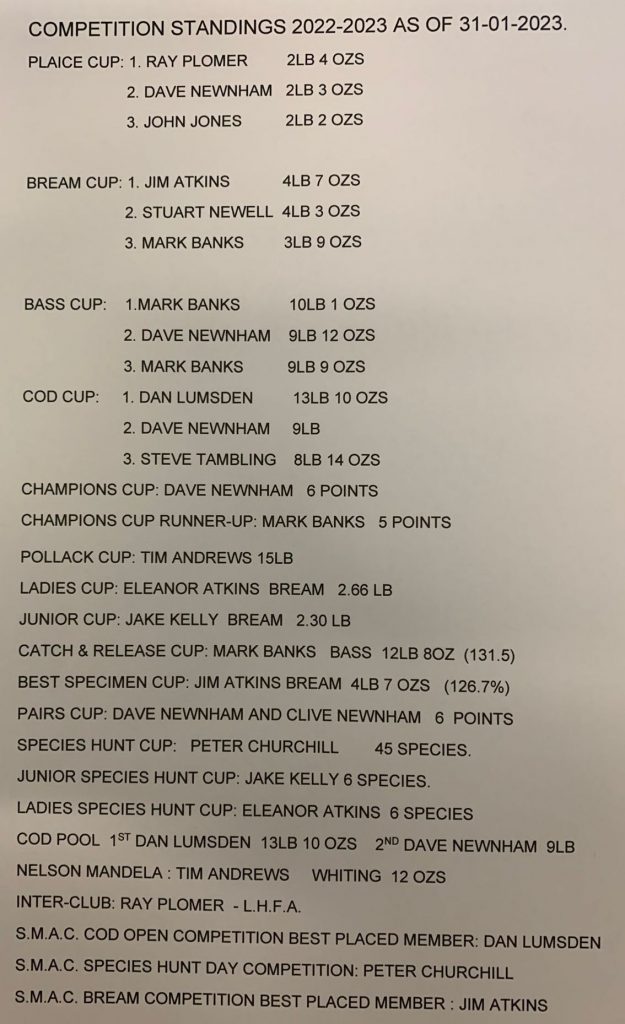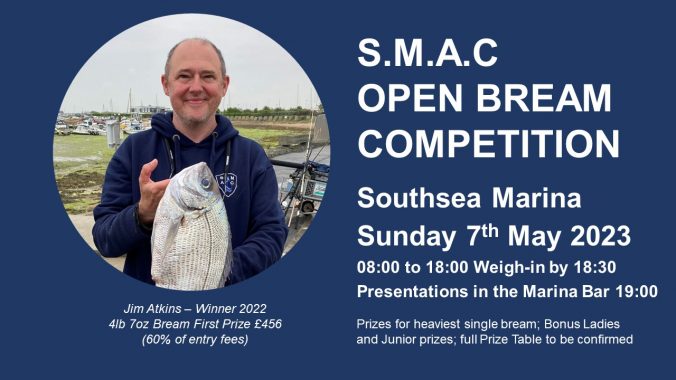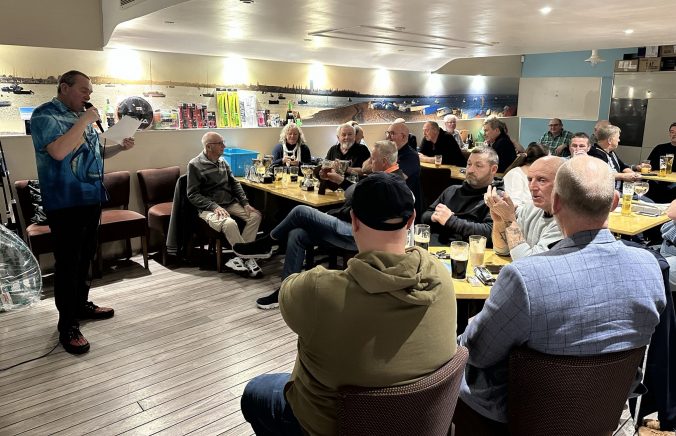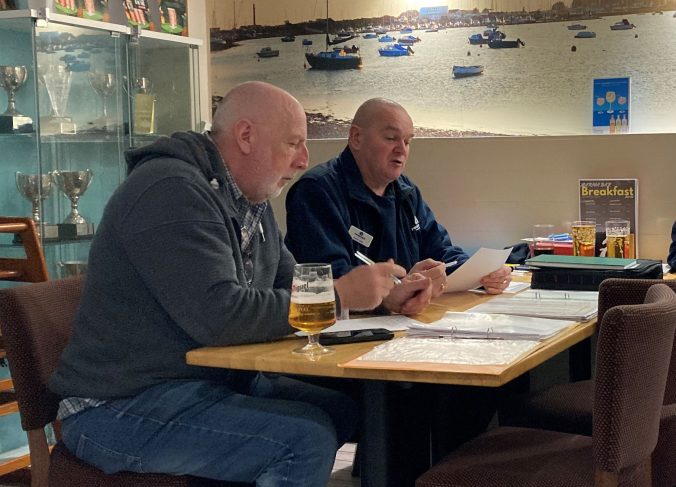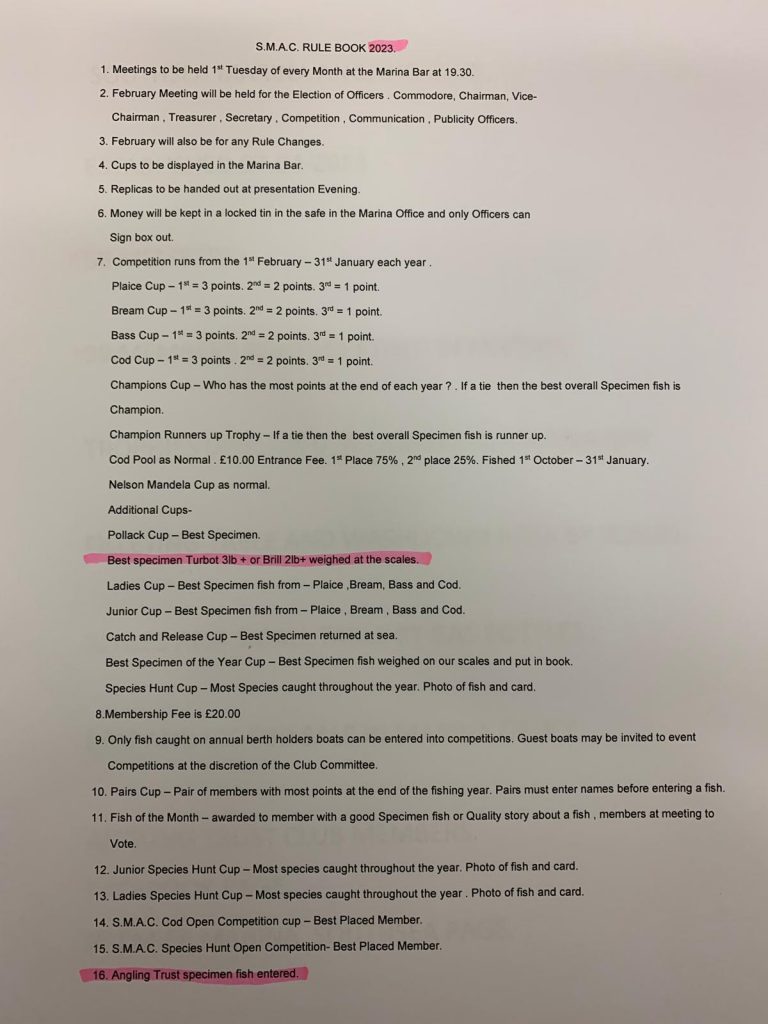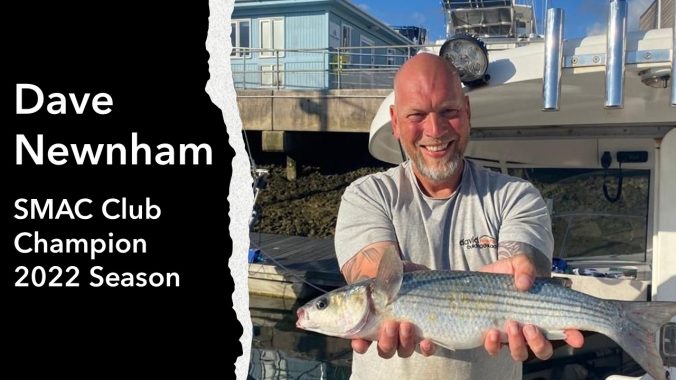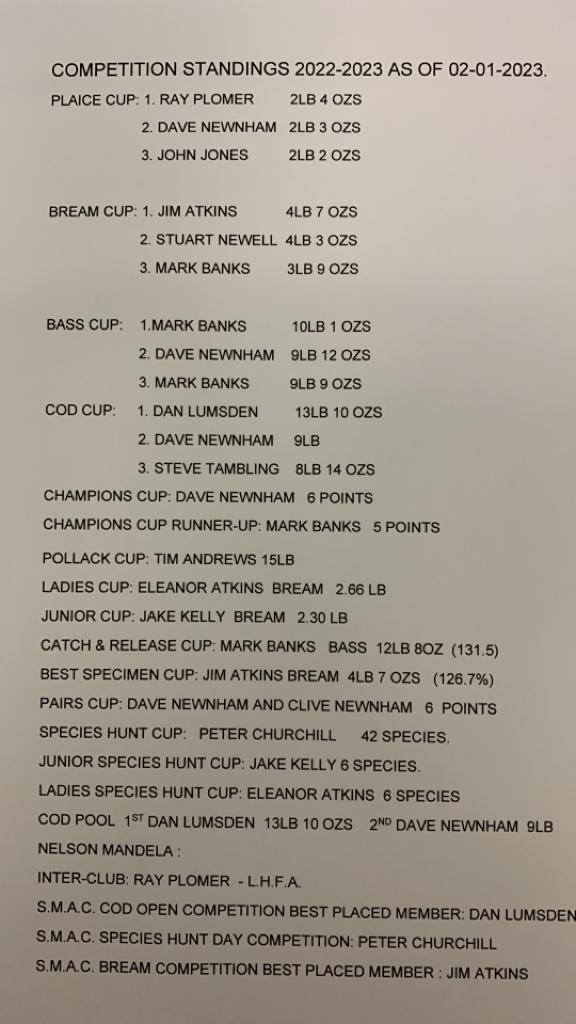Our annual Awards Night celebrates the achievements of our prize-winners, and is also our most popular social gathering where we include SMDAC, members, partners and families. This year was no exception and by the start time of 7:30 it was standing room only so raiding parties had to be despatched to the front bar to secure more seating.
Steve Kelly, our amazing and dedicated Chairman not only organised venue, food, free drink, raffle prizes, trophy engraving and a microphone, he also expertly hosted a very enjoyable evening. Steve had invited local (well, the marina anyway) celebrity Rupert Bremer who, never knowingly under-dressed, was resplendent in a stunning fish-themed ensemble in honour of the occasion.

Steve opened the ceremony by reminding us that 2023 is our 10-year anniversary! How time passes. Like the tide, membership ebbs and flows as people join or leave the marina but there are some rocks that remain steadfast – if that’s not getting too poetic. We are all massively grateful to Steve and other long-serving committee members and helpers who make our club so successful, and a great community to be a part of. Bill Arnold, king of the raffle sales (Treasurer); Steve Andrews (Social Secretary) and Tim Andrews (Commodore) have all supported the club for many years and of course, we are also very grateful for the patronage of Premier themselves.
The full prize lists and photographs are below but there are some that are worthy of a special mention. The annual club Species Hunt was highly competitive and hard fought to the last day. Peter Churchill not only won the cup, he won the SMAC one-day Species Competition proving that it isn’t just luck. He knows where to find them.
Jim Atkins deserves a special mention for the most awards won for a single fish, although to be fair it was a very impressive bream weighing 4lb 7oz. This fish won the Bream Cup, Open Bream Competition, Best Specimen; Best Placed Bream Cup Member and of course an Angling Trust species medallion.
Tim Andrews won the Mandela Cup which is a one-day competition for the largest cod, and if no cod are caught, the largest whiting. No cod were caught and most competitors assumed that the prize would be won by a whiting at least north of a pound and a half so threw back anything smaller. Tim deserves the prize for his highly developed sense of optimism, weighing in a whiting of only 12oz. This fish almost certainly wasn’t the largest caught, but it was the largest that reached the weigh-in which is the bit that counts.
Finally, Dave Newnham proved that you can win a cup without winning a cup. Our Club Champion Cup is awarded to the member who wins the most points across the other competitions, and Dave accumulated enough second place points to become Club Champion overall. Congratulations Dave.

After a hearty buffet, we then moved on to the raffle. With Bill Arnold providing the force and Eleanor Atkins providing the glamour, this sales team netted over £900 for the club funds. There was a great array of prizes carefully curated by Steve but without the generosity of members both present and through on-line pledges we wouldn’t have raised so much. We are very grateful for all the support. Club membership is only a nominal £20 so these fund-raising activities are essential to help us pay for our competitions and social events.
The 2022 Season is over. The counters are reset. Now there is all to play for in the 2023 season. Species tallies are already coming in so it looks like another fun year ahead. Good luck everyone!
Neville Merritt
SMDAC Results:
- Largest Fish From Lakes Cup: John Wearn
- Pier and Beach Cup: Chris Satow
- Mixed Lakes Cup: Frank Chatfield
- Best Cod Caught From Lady Elsa: Frank Chatfield (Whiting 1lb 11oz)
- Best Specimen Caught From Lady Elsa: Chris Satow (Undulate Ray 16lb)
- Specaies Hunt On Lady Elsa: Frank Chatfield (12 species)
- Combination Cup: Frank Chatfield
- Champions Runner-Up Cup: Chris Satow
- Champions Cup SMDAC: Frank Chatfield
SMAC Results:
